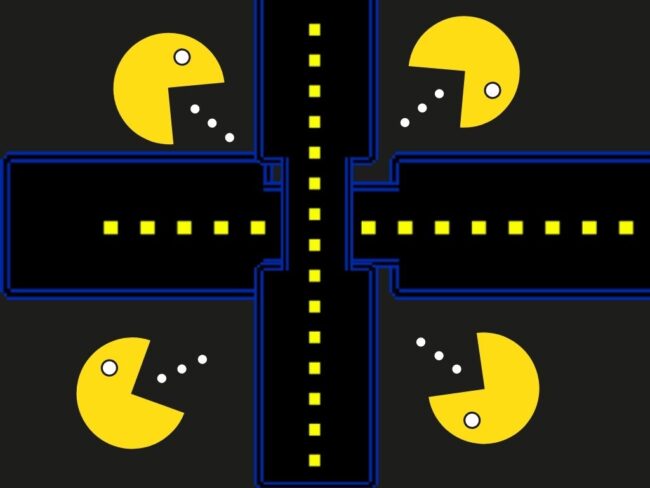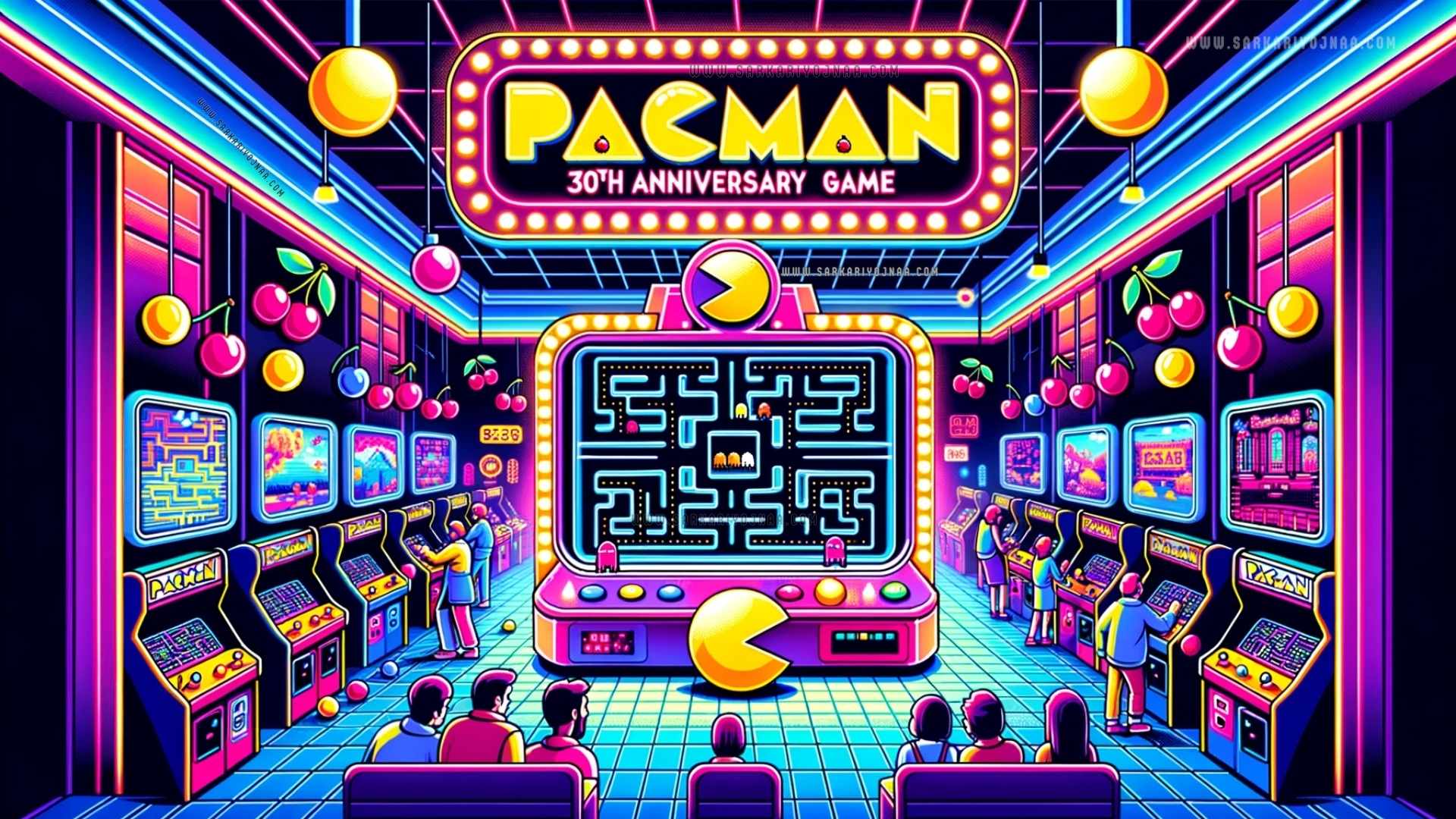When Pac-Man celebrated its 30th anniversary in 2010, it wasn’t just a celebration of a game — it was a tribute to a cultural milestone that helped s
When Pac-Man celebrated its 30th anniversary in 2010, it wasn’t just a celebration of a game — it was a tribute to a cultural milestone that helped shape the modern video game industry. From its iconic chomping sound to the quirky ghosts chasing after it, Pac-Man is a timeless character who has managed to stay relevant in a constantly evolving digital world. This anniversary gave fans and newcomers alike a chance to reflect on why Pac-Man remains one of the most beloved games ever created.
The Origins of Pac-Man: Innovation in the Early ‘80s
Pac-Man was released by Namco in 1980, a period dominated by space shooters and simplistic action games. Toru Iwatani, the game’s creator, wanted to make a game that was approachable and fun for everyone — especially women, who were not the primary target for most arcade games at the time. The result was a simple, maze-chase game where a yellow, pizza-slice-shaped character navigates through a labyrinth eating pellets and avoiding ghosts.
This design was revolutionary: the gameplay was easy to understand, non-violent, and focused on pattern recognition and strategy rather than just reflexes. Players were hooked by the addictive challenge of clearing the maze while outsmarting four ghosts, each with a distinct behavior pattern. This clever AI programming gave Pac-Man a depth that was unusual for arcade games of the era.
The Phenomenal Rise of Pac-Man
Pac-Man quickly took the world by storm. Arcades everywhere were filled with people eager to play this new maze game. It was the first video game to truly break out of the niche “gamer” crowd and appeal to a broad audience, becoming the best-selling arcade game of all time.
Pac-Man’s influence went beyond the arcade cabinet:
More about: pacman 30th anniversary
- Merchandising Boom: From T-shirts and toys to cereal and lunchboxes, Pac-Man became one of the first video game characters to inspire widespread merchandising.
- Pop Culture Icon: The game’s simple, colorful design and catchy sounds made it instantly recognizable. It inspired a hit song, “Pac-Man Fever,” and even a Saturday morning cartoon series.
- Language and Symbols: Terms like “power pellet” and “ghost” entered popular vocabulary, and Pac-Man’s simple shape became an iconic symbol of gaming.

The 30th Anniversary: Honoring Three Decades of Legacy
Celebrating 30 years of Pac-Man in 2010 was a big deal for gamers and the industry. Namco marked the occasion with numerous special events, re-releases, and new titles that kept the spirit of the original alive while introducing new features.
Special Edition Releases
Several anniversary editions of Pac-Man were released on various platforms, including smartphones, consoles, and PCs. These editions added new mazes, multiplayer modes, and updated graphics, appealing both to nostalgic fans and new players. The goal was to retain the addictive gameplay of the original while embracing modern gaming technology.
Global Celebrations and Tournaments
The anniversary sparked worldwide celebrations, with arcades, gaming conventions, and online communities hosting tournaments and competitions. Players competed for high scores and shared stories of their Pac-Man experiences, reinforcing the game’s social and cultural importance.
Collaborations and New Merchandise
Namco partnered with brands to produce limited-edition merchandise and special promotions, including apparel, collectibles, and even food products. These collaborations brought Pac-Man into everyday life and helped introduce the character to younger audiences.
Why Pac-Man Still Matters Today
More than three decades later, Pac-Man remains relevant in the gaming world for several reasons:
- Simplicity and Accessibility: The straightforward controls and rules make the game approachable to players of all ages and skill levels.
- Challenging Gameplay: Despite its simplicity, mastering Pac-Man requires skill, strategy, and quick thinking.
- Cultural Nostalgia: For many, Pac-Man is a symbol of the early days of gaming, evoking memories of arcades and first gaming experiences.
- Ongoing Evolution: The franchise continues to release new games and spin-offs, incorporating modern gameplay elements while respecting its roots.
The Lasting Impact on Game Design and Industry
Pac-Man set a new standard for video game design:
- AI Behavior: The ghosts’ distinct personalities and strategies were an early example of non-player character (NPC) AI, influencing future game development.
- Game Mechanics: The risk-and-reward system created by the power pellets added excitement and depth.
- Audience Expansion: Pac-Man showed that video games could appeal to a broad audience, including women and families, influencing the market and development priorities.
Modern Pac-Man: From Retro to Next-Gen
The Pac-Man franchise has expanded far beyond the original maze game. Titles like Pac-Man Championship Edition and Pac-Man World have introduced new gameplay styles, faster pacing, and 3D platforming elements. The character also makes appearances in crossover games and media, maintaining a presence in modern gaming culture.
New technologies like mobile gaming, virtual reality, and streaming offer fresh opportunities for Pac-Man to reach audiences. The character’s simple design makes it ideal for adaptation to various formats and platforms.
Conclusion: A Celebration of Timeless Fun
The 30th anniversary of Pac-Man was more than just a celebration of a game; it was a recognition of a cultural icon that has brought joy to millions. Pac-Man’s success lies in its simple yet engaging gameplay, broad appeal, and pioneering design. As we look ahead, Pac-Man’s legacy reminds us that great games don’t need to be complicated — they just need to be fun.
Frequently Asked Questions (FAQs) About Pac-Man 30th Anniversary
Q1: When was Pac-Man first introduced to the public?
A1: Pac-Man was first released in 1980 by Namco.
Q2: What made Pac-Man unique compared to other games of its time?
A2: Pac-Man featured maze navigation, strategic gameplay, and non-violent challenges, making it accessible to a wider audience.
Q3: Who created Pac-Man?
A3: The game was created by Toru Iwatani, a designer at Namco.
Q4: What were some special activities during the 30th anniversary?
A4: Special game releases, tournaments, merchandise, and global celebrations were held to mark the occasion.
Q5: How did Pac-Man impact video game culture?
A5: Pac-Man became a global icon, inspiring merchandise, music, cartoons, and influencing game design.
Q6: Is Pac-Man still available to play today?
A6: Yes, Pac-Man is available on many platforms including mobile devices, consoles, and PCs.
Q7: What is the significance of the ghosts in Pac-Man?
A7: Each ghost has a unique AI behavior, creating dynamic and challenging gameplay.
Q8: Did the 30th anniversary include new games?
A8: Yes, special editions and updated versions were released to celebrate the milestone.
Q9: How has Pac-Man evolved over time?
A9: The franchise has expanded into new genres, improved graphics, multiplayer modes, and new technology like VR.
Q10: Why is Pac-Man considered a timeless game?
A10: Its simple but challenging gameplay, broad appeal, and cultural significance have kept it relevant across generations.
Must Visit: infromednation




COMMENTS